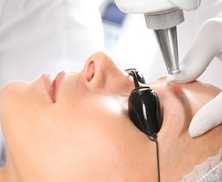Ingrown hairs are hairs that are growing sideways, back into the hair follicle or into the skin. When a hair is ingrown, it can cause raised bumps in the skin, which can occasionally become inflamed, red, irritated and maybe even painful.
Most people experience ingrown hairs on their legs and other parts of the body, as a result of shaving or waxing. Hair is more likely to become ingrown when it is cut off above the hair follicle, which often happens with waxing and shaving.
Ingrown hairs can also appear on the face, most often in men who shave with a wet or electric razor regularly. As the skin on the face is so sensitive, ingrown hairs here can become very irritated and red. They are also very visible to other people, potentially causing embarrassment for the sufferer.
Treating and preventing ingrown facial hairs
If you have ingrown hairs on your face, you should:
• Avoid scratching, as this increases the risk of scarring and further inflammation
• Apply wet heat to razor bumps to speed up the healing
• Remove ingrown hairs that are visible above the skin, but leave those underneath the skin alone
• Prevent infection by applying anti-bacterial lotion or cream
To prevent ingrown hairs from reoccurring in the future, the best option is to undergo laser hair removal treatment. This is designed to remove unwanted hair permanently, so you no longer have to shave or wax.
































 020 8012 8582
020 8012 8582